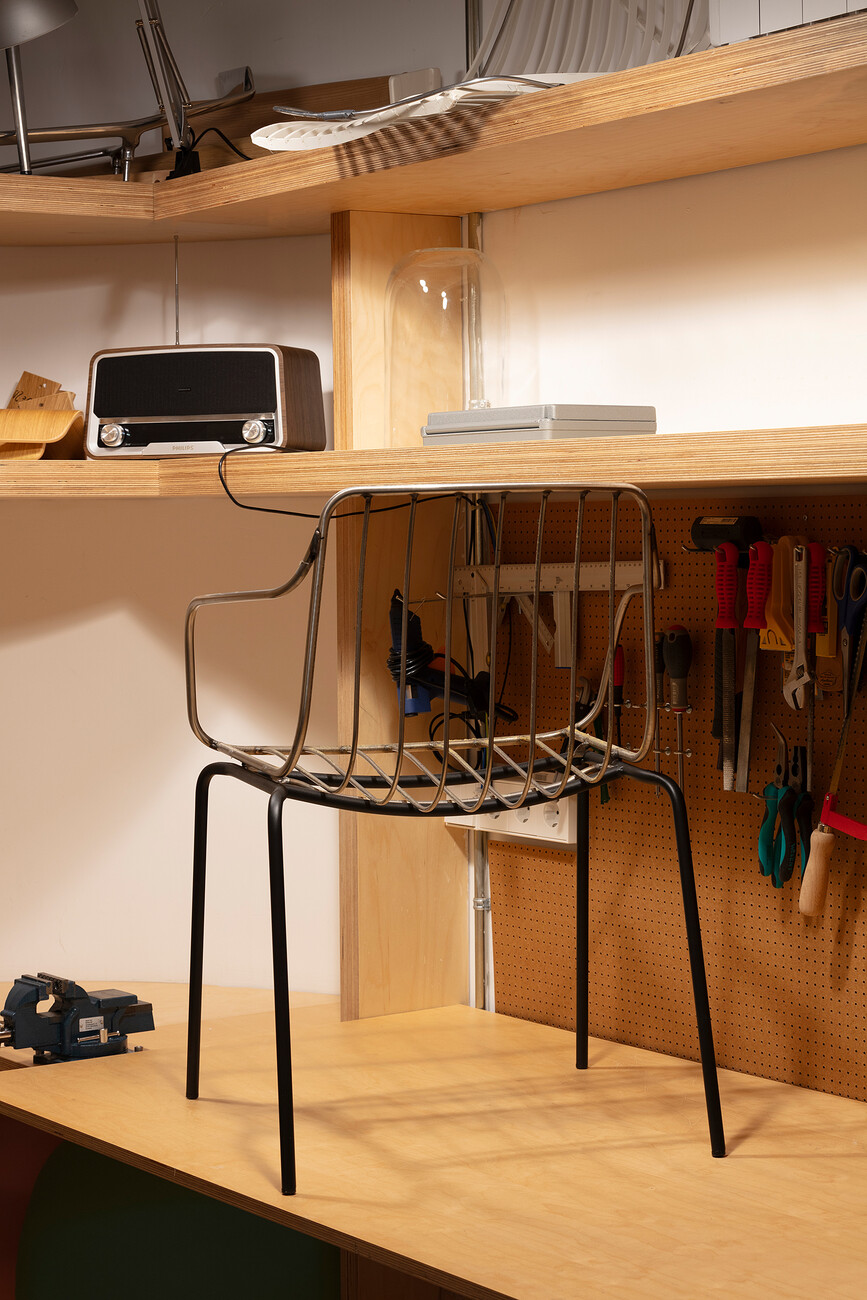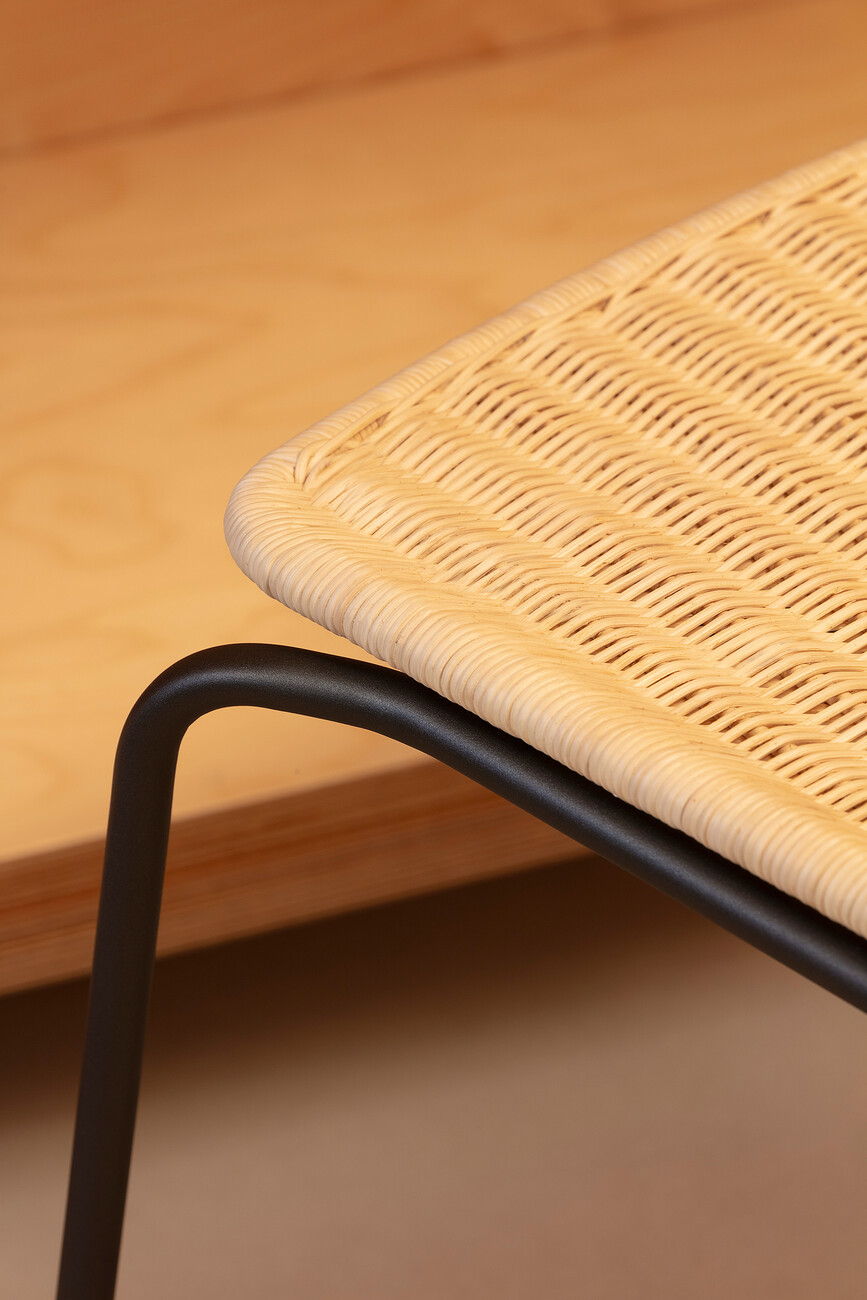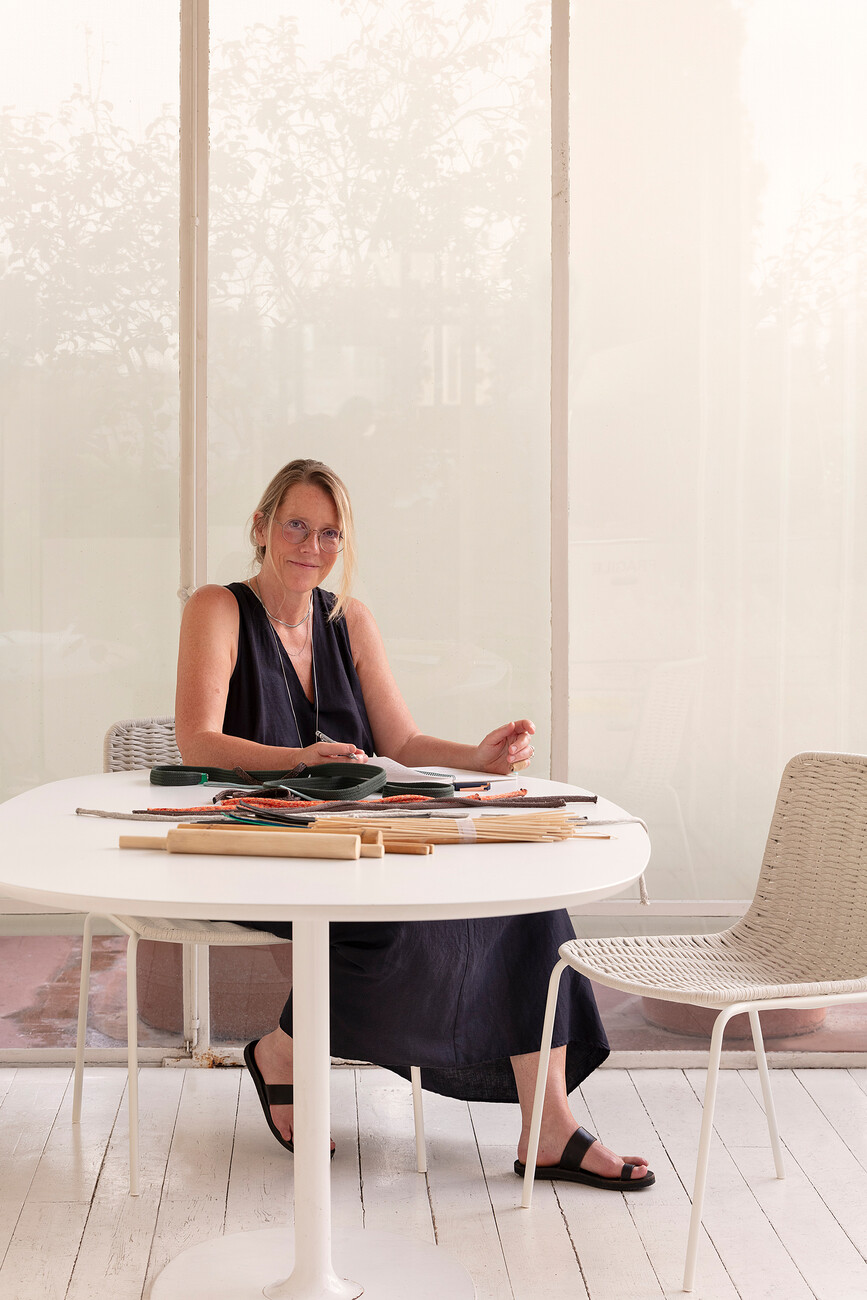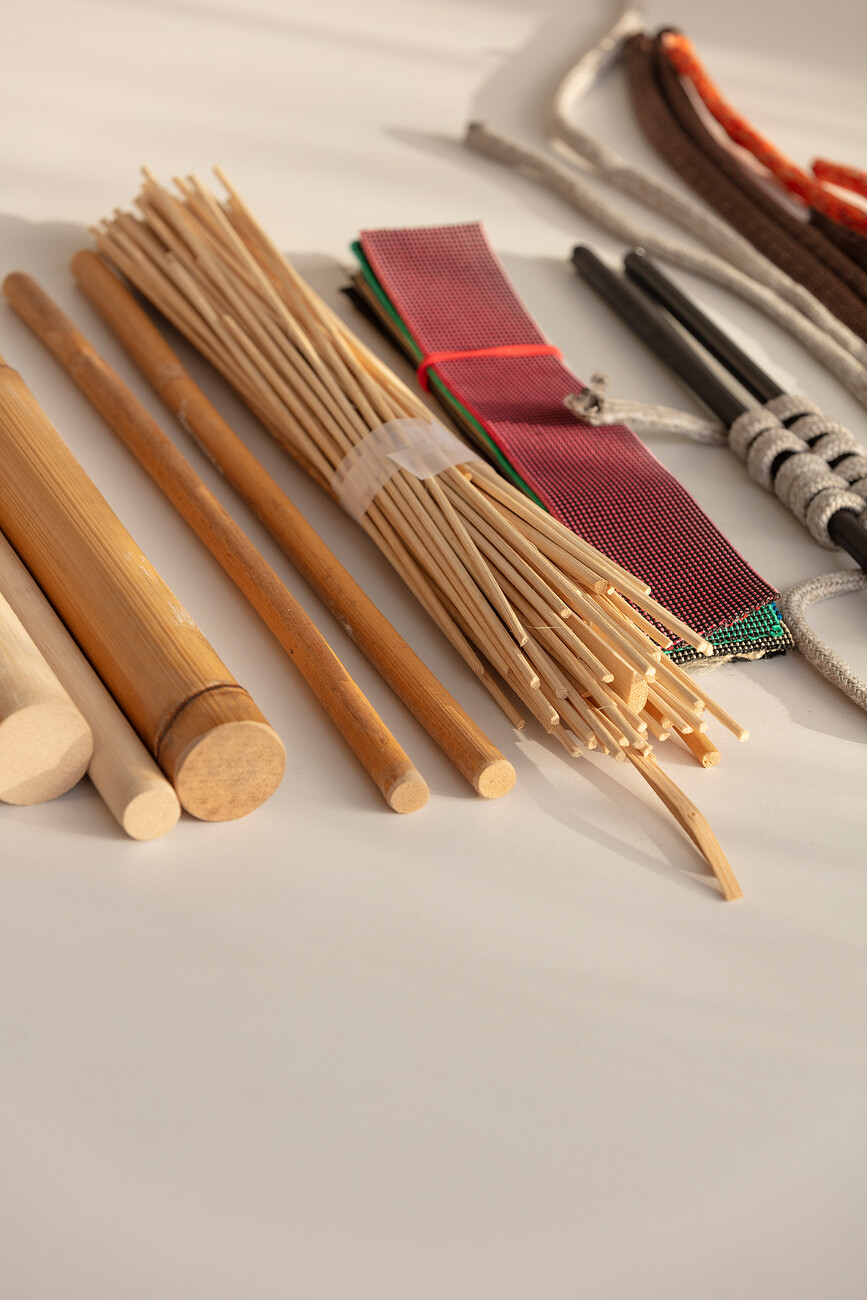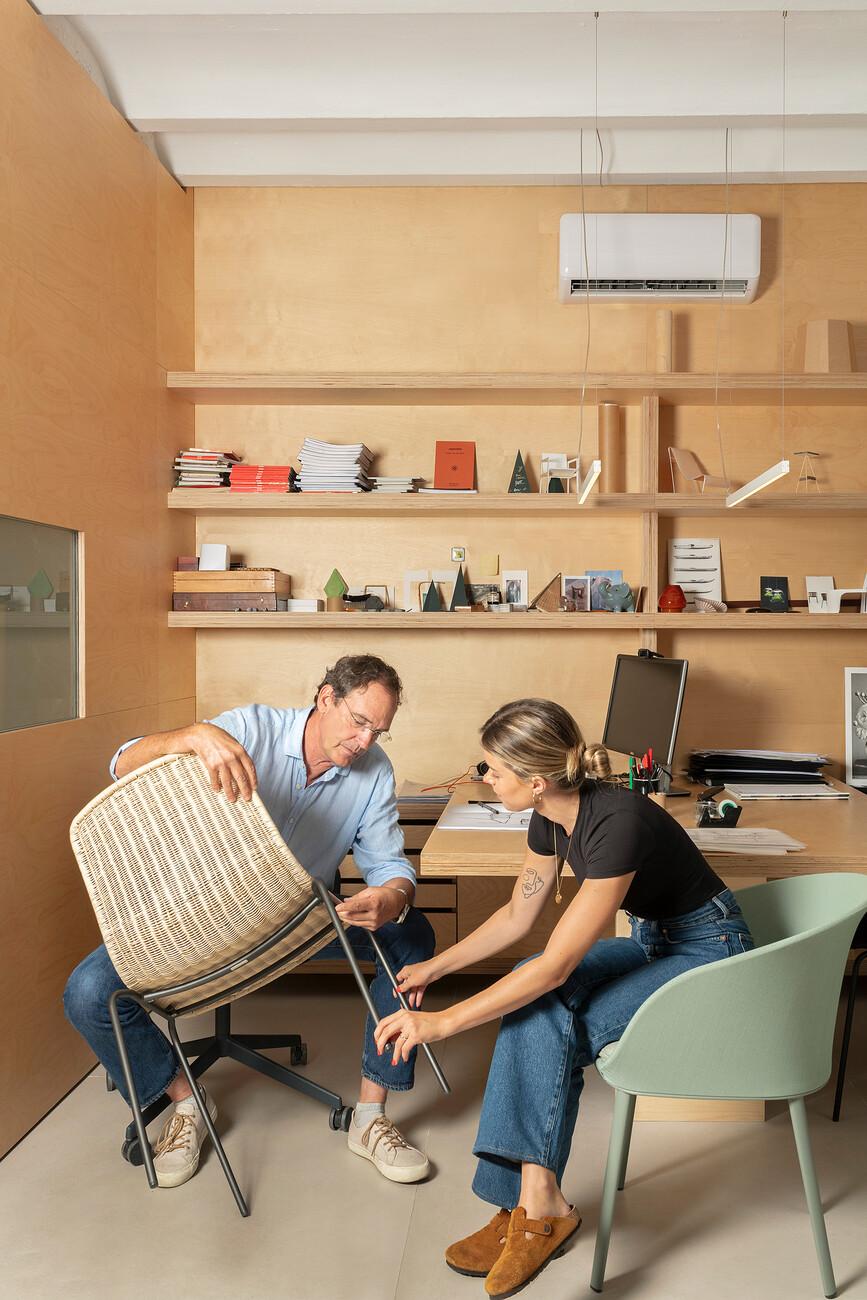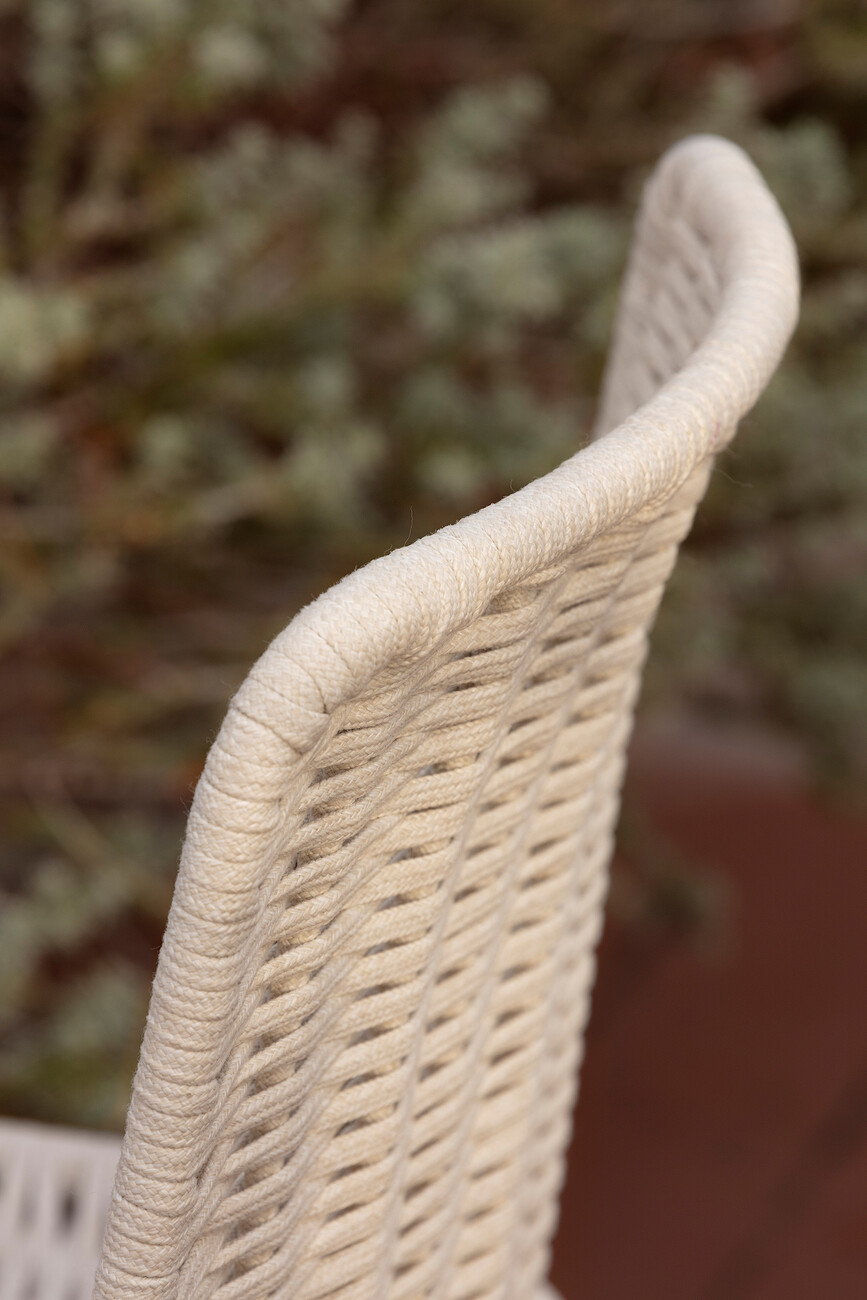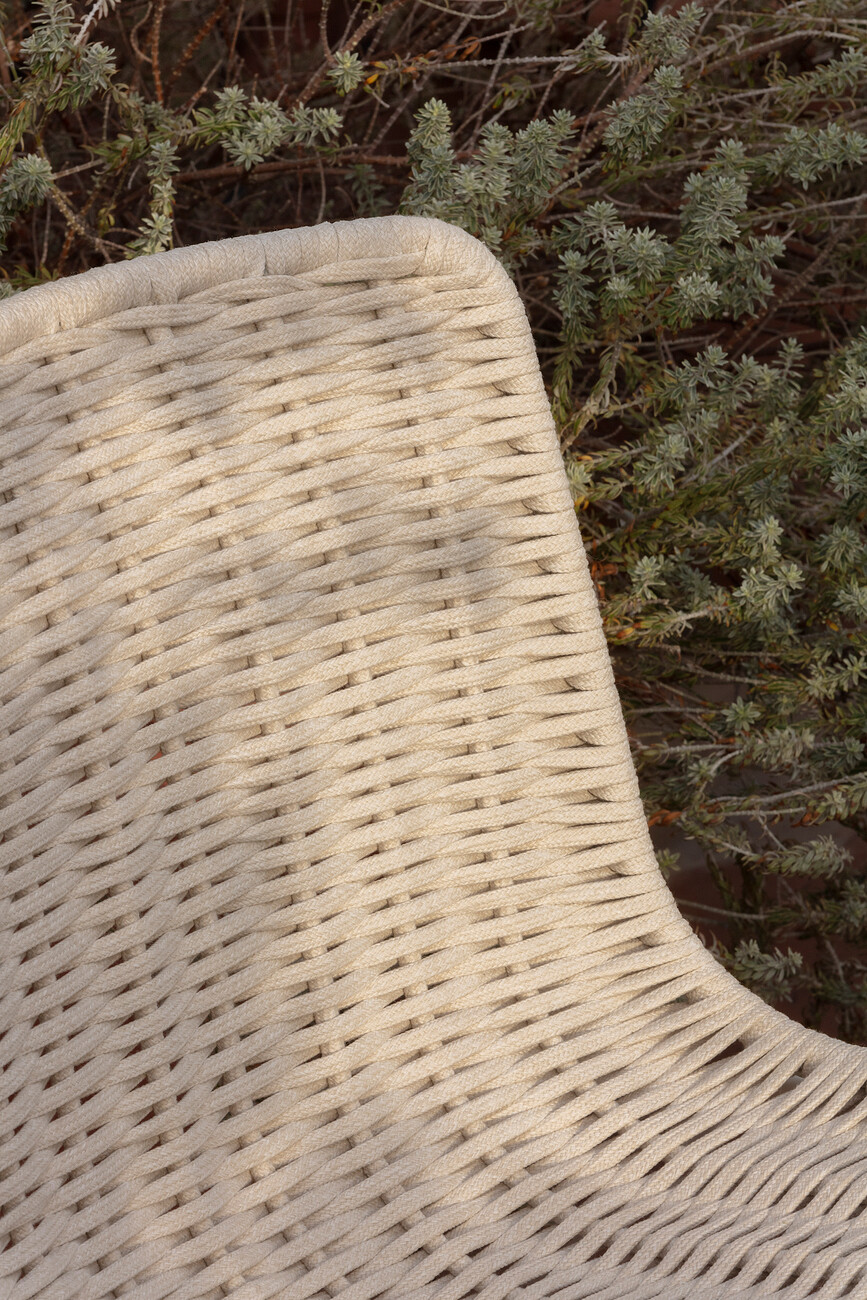Saving the good
Expormim demonstrates that it is worth looking back now and then at a design that was already sustainable and timeless at the time of its creation: the Spanish company is celebrating 25 years of "Lapala" this year. A chair by Alberto Lievore, Jeanette Altherr and Manel Molina, with a seat made of woven rattan. Studio Lievore Altherr Molina found the inspiration in the wickerwork: "It is wonderful in itself, breathable, structured and has a unique colour that cannot be compared to a textile material," says Jeannette Altherr.
For "Lapala" the renowned furniture maker translated traditional craftsmanship into industrial processes: "In those days, it was not common in industrial design to work with traditional techniques, so it was a challenge," Manel Molina recalls. And Alberto Ales, Product Manager at the Expormim Design Department, adds: "The 'Lapala' chair had it all – a very high traditional craftsmanship, but at the same time masterfully resolved in an industrial way. A simple, modest and humble chair, which had aged very well. The chair matched very well our philosophy. At that time, Expormim was on the way to recovering all its "Know How", going back to the roots of working in rattan furniture with the help of architects and designers such as Oscar Tusquets Blanca, Benedetta Tagliabue and Jaime Hayon. The 'Lapala' chair had a clear Mediterranean aesthetics, and it was a good representation of our basket-making tradition, our culture, what we were and what we wanted to be."
In 2015, Expormim also introduced successfully an outdoor model made of nautical rope and stainless steel. This year, the company is putting the spotlight on the original model of "Lapala". To celebrate the 25th anniversary, Expormim has added a new indoor version to its portfolio. The creative team based the new chair on the first designs, which were conceived in 1998: The wickerwork is thus woven by hand around a structure made of metal in hours of work. The designers have now adapted its ergonomics to create a seat that is as comfortable as it is robust, can be stacked and flexibly positioned thanks to the natural material. "Lapala" is ideal for living spaces such as the hospitality industry thanks to its subtle character and the many ways it can be combined with furnishing styles of all kinds.
Interview with Manel Molina:
Anna Moldenhauer: The design of "Lapala" was already timeless in its clarity in 1998, combining tradition with new technology. Changing a functioning system is always a challenge – what was your idea for the new edition for the chair's 25th anniversary?
Manel Molina: The 25th anniversary edition of ‘Lapala’ was an Expormim’s proposal. Expormim gave us the idea of editing the chair again in natural wicker as it was in its beginnings, obviously the proposal made us very excited. They did a very good job adapting the structure of the chair to the new material. The result couldn’t have been better. The new "Lapala" has a level of quality worthy of the public to which it is addressed. All the experience accumulated over the years, after a long time manufacturing and weaving the outdoor version with nautical rope, has contributed very positively to the resolution of this reissue for interior use. It is not surprising at all because the craftsmanship of rattan furniture fueled the growth of Expormim since its establishment. But rattan is not the only craft technique they have preserved and updated. There’s another kind of magic happening in their factory and it has to do with another humble yet versatile material: rope.
What memories do you have of developing "Lapala" for Expormim in the nineties?
Manel Molina: The main memory is the thrill that I personally felt when Expormim was interested in producing 'Lapala' again. It was a collection that had not been manufactured since its first manufacturer -specialized in handmade products woven in wicker-closed. The design of the 'Lapala' chair is very attractive but at that time it was highly unlikely to find a company capable of daring with mass production of a design that requires such a high craft technique. Expormim expressed its interest in 'Lapala' and for us it was a great joy. Regarding the development of the chair, Expormim respected the design approach. They only adapted the structure in order to be able to weave it with nautical rope.
How does the new version for indoor use differ from the original version, which was also intended for indoor use?
Manel Molina: The new 25th Anniversary version is more sophisticated than its predecessor. Ergonomics has improved respecting the comfort parameters of the "Lapala" made of nautical rope. Technology has also been incorporated into its manufacturing, so that small aesthetic details improve its final appearance. Right now, we are working on incorporating the range of bases for different uses that the nautical rope version already offers. The aim is to make this 25th Anniversary edition a benchmark in the offer of indoor seats woven in natural wicker.
Why did you choose wicker as the material for the seat structure then as now?
Manel Molina: The use of wicker as the material to weave “Lapala” was the sole and main premise that defined the commission of this design. That was the “briefing”. Thereafter, we designed according to the material, looking for a way where wicker could express itself clearly without exaggerating or forcing its nature in an exercise of synthesis and proportion.
What claim to sustainability do you want to signal with a new edition of an existing design?
Manel Molina: The main vindication of the sustainable qualities of 'Lapala' is the timelessness of the design. The 25 years of existence together with the market acceptance have accompanied this design, legitimizing it as a timeless design. Its handmade nature contributes greatly to enhancing this timelessness.
Why was and is it appealing for you to work with Expormim?
Manel Molina: The attraction is a consequence of closeness and mutual recognition. I consider Expormim a company which is "close" to their clients. The fact that we both belong to the Mediterranean area, sharing common codes, makes communication an easy and natural exercise. These factors are very important when collaborating with a manufacturer. The handcrafted essence of Expormim products is also a characteristic that’s connected to my own training since I come from a family of artisans. At this point, I would like to highlight the high standards of this client and the clarity with which they express their concerns when proceeding with the projects.














